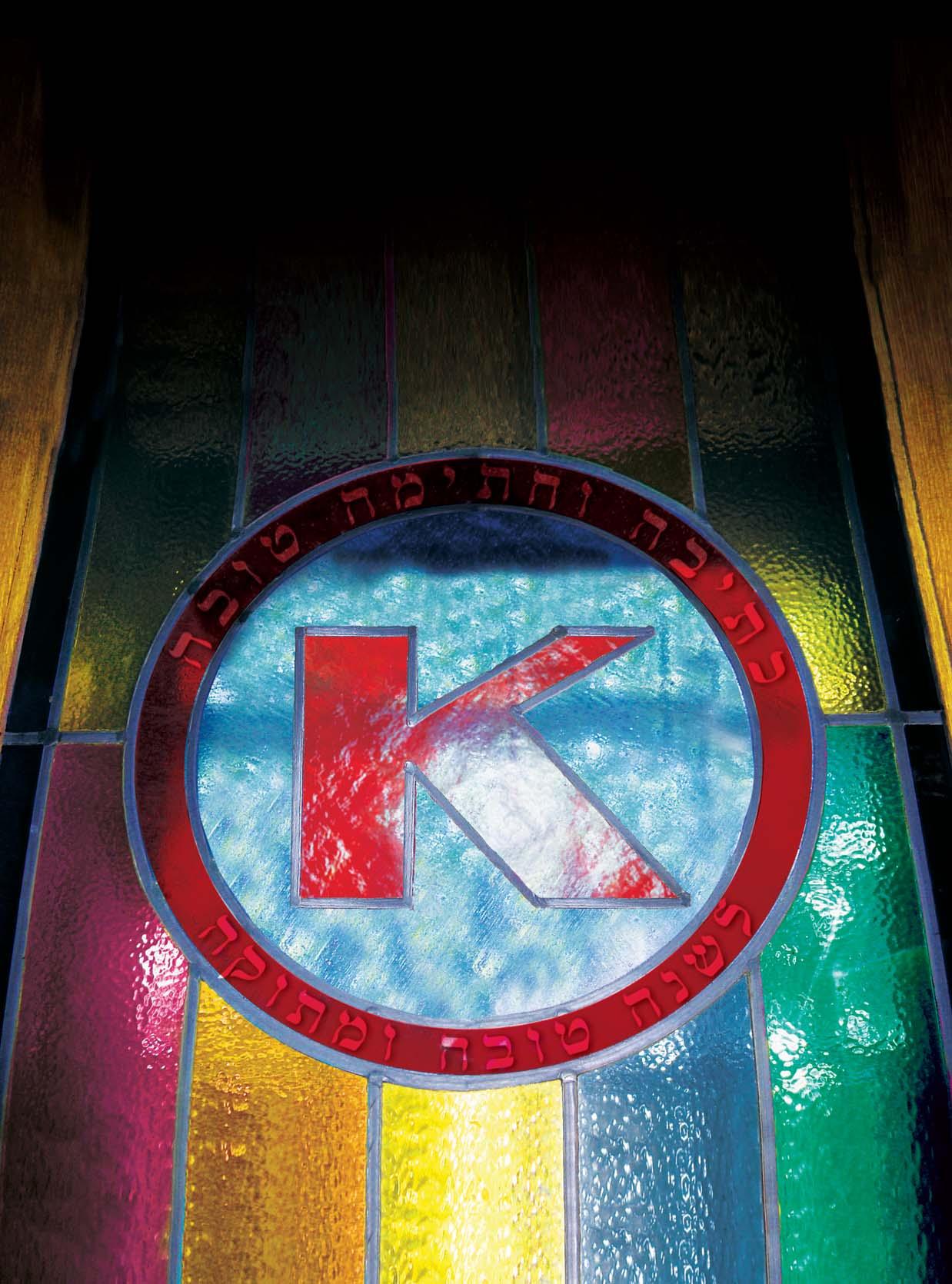
TISHREI 5770 ,arh gW,a
Soul Nutrition
Certified
3 4 5 10 12 14 17 18 19 20 22 23
SHARE YOUR SPIRIT QUESTIONS FOR THE ~
KOSHER MUSIC
THE MUSIC OF THE YOMIM NOROIM
By Cantor Sherwood Goffin
YANKEES & THE ~ SCORE A GRAND SLAM
HALACHIC ISSUES OF MAKEUP ON SHABBOS & YOM TOV
By Rabbi Don Yoel Levy
HOW SWEET IT IS
By Rabbi Yitzchak Gornish
HEALTHY SPIRIT
TO SLEEP OR NOT TO SLEEP RECIPE
WHO’S BEHIND THE ~ INTERVIEW
With Rabbi Yitzchak Hanoka
CHASSIDIC INSIGHTS: BECOME ONE WITH HASHEM
Compiled by Dina Fraenkel
SOUL NUTRITION
FEATURED WRITER: Cantor Sherwood Goffin

Cantor Sherwood Goffin, author of the article “Kosher Music,” has served as chazzan at the Lincoln Square Synagogue in Manhattan since 1965. He has recorded 7 albums and has appeared in concert all over the world. He is also a faculty member of the Belz School of Jewish Music at Yeshiva University, where he teaches courses in Jewish liturgy and folk music.
Dear Reader,
The concept of kashrus is not just applicable to food. As a matter of fact, the only time the word kosheris mentioned in Tanach is in Megillas Esther when Esther speaks to Achashverosh and says, “V’kasher hadavor l’fnay hamelech.”
We all know that a sukkah and schach need to be kosher, and an esrog, lulav, Sefer Torah, and mikveh need to be kosher as well. Even music can fall under the category of kosher or nonkosher. The music of the Yomim Noroim is the pinnacle of kosher music.
Kosher music is close to my heart since I have been writing music and have been a Baal Tefillah for the Yomim Noroim for over 20 years, davening in shuls across the world, from Arizona to Brazil and many places in between. It is interesting to note that quite a few of the rabbonim at ~ headquarters are Baalei Tefillah and chazzanim as well!
In a way, the kosher requirements for food and Shluchei Tzibbur are quite similar. At first glance, all a chazzan needs is a good voice; however, the Shulchan Oruch says that a Shliach Tzibbur needs to have many qualifications. It has been told that the Maharsha once applied to be a chazzan in order to earn a parnossah, but he was not chosen for the job. He wondered why he did not get the job – after all, he had 9 of the 10 requirements for a chazzan. He only lacked a good voice! Giving kosher certification to food can be quite complicated as well. Much work goes on behind the scenes with many safeguards and protocols to certify even a seemingly simple product. Learn more about kosher music with Cantor Sherwood Goffin’s fascinating article about the origins of the most kosher music of all, the music of the Nusach HaTefillah.
While you are enjoying the first few days of your sweet new year, get another taste of sweetness when you read Rabbi Yitzchak Gornish’s article on the secrets of certifying sweeteners, from the original sweetener, honey to modern day artificial sweeteners.
A great Yankee baseball legend once said, “The way a team plays as a whole determines its success. You may have the greatest bunch of individual stars in the world, but if they don’t play together, the club won’t be worth a dime.” A kosher certifying agency has to work as a team and share their knowledge and experience with each other. Read how the ~ has stepped up to the plate in the new Yankee Stadium…and what a grand slam! Get the latest stats and find out what it took to set up and maintain a fresh, hot kosher menu at the new Yankee ballpark.
Finally, looking your best on Shabbos and Yom Tov isn’t always easy. Find out about the intricacies and halachic issues with “Shabbos makeup” with an in depth look by Rabbi Don Yoel Levy.
EDITOR-IN-CHIEF:
Rabbi Chaim Fogelman
EDITOR: Dovi Scheiner
ASSOCIATE EDITOR: Dina Fraenkel DESIGN:
Wishing you and your family a K’sivah v’chasimah tovah, l’shanah tovah u’mesukah. Best wishes for a happy, healthy and KOSHER, sweet new year!
Rabbi Chaim Fogelman
 Editor-in-Chief
Editor-in-Chief
www.SpotlightDesign.com
FEEDBACK
Share Your Spirit
Readers share their thoughts about the last issue...
Dear Kosher Spirit,
We were also helped by Bonei Olam and Boruch Hashem we have them to thank for our beautiful son, but there is also an organization that gives chizuk and support to infertile couples — ATIME — A Torah Infertility Medium of Exchange. Without them, we would have never survived 11 years of infertility, 10 IVF’s, and a 26-week pregnancy loss before the birth of our son in March 2007. Please give credit where credit is due, they are both amazing and needed organizations in the frum community!
Sharon Sommer
Kosher Spirit responds: We would be remiss if we did not acknowledge the incredible work of ATIME. The organization is truly a blessing for those struggling with infertility. You can reach ATIME through their website: www.atime.org.
Dear Kosher Spirit,
Ihad the privilege of reading the Pesach issue of the Kosher Spirit; thanks for sending it to us.
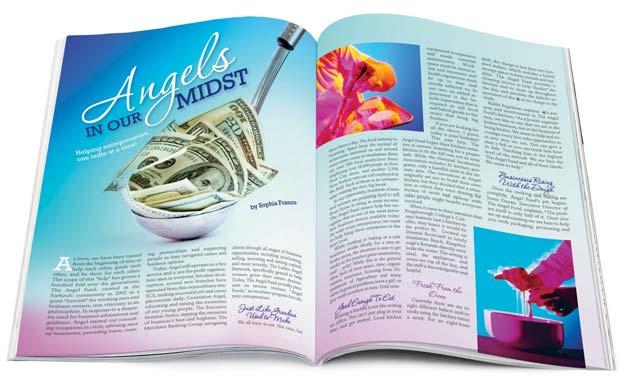
I very much enjoyed perusing through the pages. I must acknowledge though that the most beautiful, eloquent, rich and insightful article/page is by far the Editor’s Letter/Editorial. I read it a few times and it just wouldn’t get boring.
Shulem Klein
Dear Kosher Spirit,
On page 3 of Kosher Spirit, in a comment to a letter, it states that there is no issur bosor becholov on treif meat. This is a mistake. There is definitely an issur bishul bosor becholov on treif beef [a machlokes if there is issur hanoho]. Only on non-kosher animals (eg. pork or rabbit) there is no isur bishul bosor becholov.
Sincerely,
theless according to most poskim the issur of hanoho still applies to neveilah. The Dagul Mervava is meikal but that is only where there is a monetary loss. The Chasam Sofer was even reluctant to reply on this even in cases of monetary loss. I think a student toying with such a mixture is surely considered to be getting hanoho from it. All this is spelled out in Pische Teshuva YD 87:6.
We welcome your comments, submissions and letters to the editor.
MAIL: 391 Troy Avenue Brooklyn, NY 11213
E-MAIL: editor@kosherspirit.com
HaRav
Usher
Anshel Eckstein Belzer Dayan & Rav HaMachshir
Dear
Kosher Spirit,
I enjoy your magazine, please keep up the good work. On the bottom right of page 3 of your Spring 2009 issue the Kosher Spirit writes that “the prohibition of basar b’cholov only applies to kosher meat and kosher milk, so the prohibition is not a problem for a Jewish student in a non-kosher culinary school.” While the statement is true, why do you assume that these culinary schools do not use kosher animals? If you mean to say that they are not using basar kosher, that is correct, they probably are using neveilah. Never-
Thank you,
Shimshee Rosenberg
Kosher Spirit Responds: In the last issue of Kosher Spirit [pg. 3] it was implied that it is permissible to cook milk and non-kosher meat together. This is incorrect. It is only permissible to cook milk together with a nonkosher species (e.g. a pig or horse); however it is forbidden to cook non-kosher meat from a kosher species (e.g. meat from a cow that was not properly slaughtered) together with milk. According to most opinions, it is forbidden to derive any benefit (hanoho) from such a mixture as well. We apologize for the confusion.
www.OK.org • 3
The ~ receives many letters/emails with kosher questions...
Rabbi Hanoka responds:
First, we have to look at the question from a halachic perspective. Is cold liquid in a non-kosher vessel permissible? The simple answer is that one is allowed to use a clean non-kosher vessel for cold liquids on a temporary basis, as long as one does not have the liquid sitting in the vessel for 24 hours (the time it takes for kovush – pickling). Halacha requires all non-kosher vessels to be cleaned before use. One can rely on the fact that a reputable establishment keeps all items clean to comply with health regulations.

To explain further, regular liquids have a 24-hour time period before kovush and absorbing from the vessel in which it is contained. Sharp liquids, like alcohol, would absorb in a shorter period of time (18 minutes). This is only true if the majority of liquid is alcohol, but most alcohols are not considered sharp liquids, because they would have to be over 100-proof (more than 50% alcohol)
The average alcohol contains a substantial amount of water and is not pure alcohol. In addition, many mixed drinks, such as Bloody Mary, Screwdriver, etc. are even further diluted. With mixed drinks, it is imperative to make sure that each ingredient is kosher certified.
When drinking a shot, most people drink it right away, within 18 minutes and in most cases, the shot is not strong enough to absorb in 18 minutes anyway. In a case where someone is drinking a “sharp” alcohol, like Zeks Un Ninetziger, it is proper to make sure to drink it in less than 18 minutes. Some Sefardim hold of the Beis Yosef’s
opinion that glass does not absorb at all and are lenient, but the minhag of Ashkenazim is to be machmir.
A slice of lemon or lime (commonly added to drinks) is a sharp food cut with a non-kosher knife and is not permissible.
There is also a din of not drinking with goyim at non-Jewish parties (like an office holiday party). This response was written for situations when one is socializing in a Torah-permissible manner (i.e. Shidduchim, etc.). For questions regarding a nonJewish party, please ask your local Orthodox rabbi. ~
For information about drinking coffee in a bar or restaurant, please see the Tishrei 5768 issue of Kosher Spirit.
Dear ~,
Is it permissible to have an alcoholic drink from a clean glass at a bar/lounge?
4• www.OK.org
The Music of the YomimNoroim
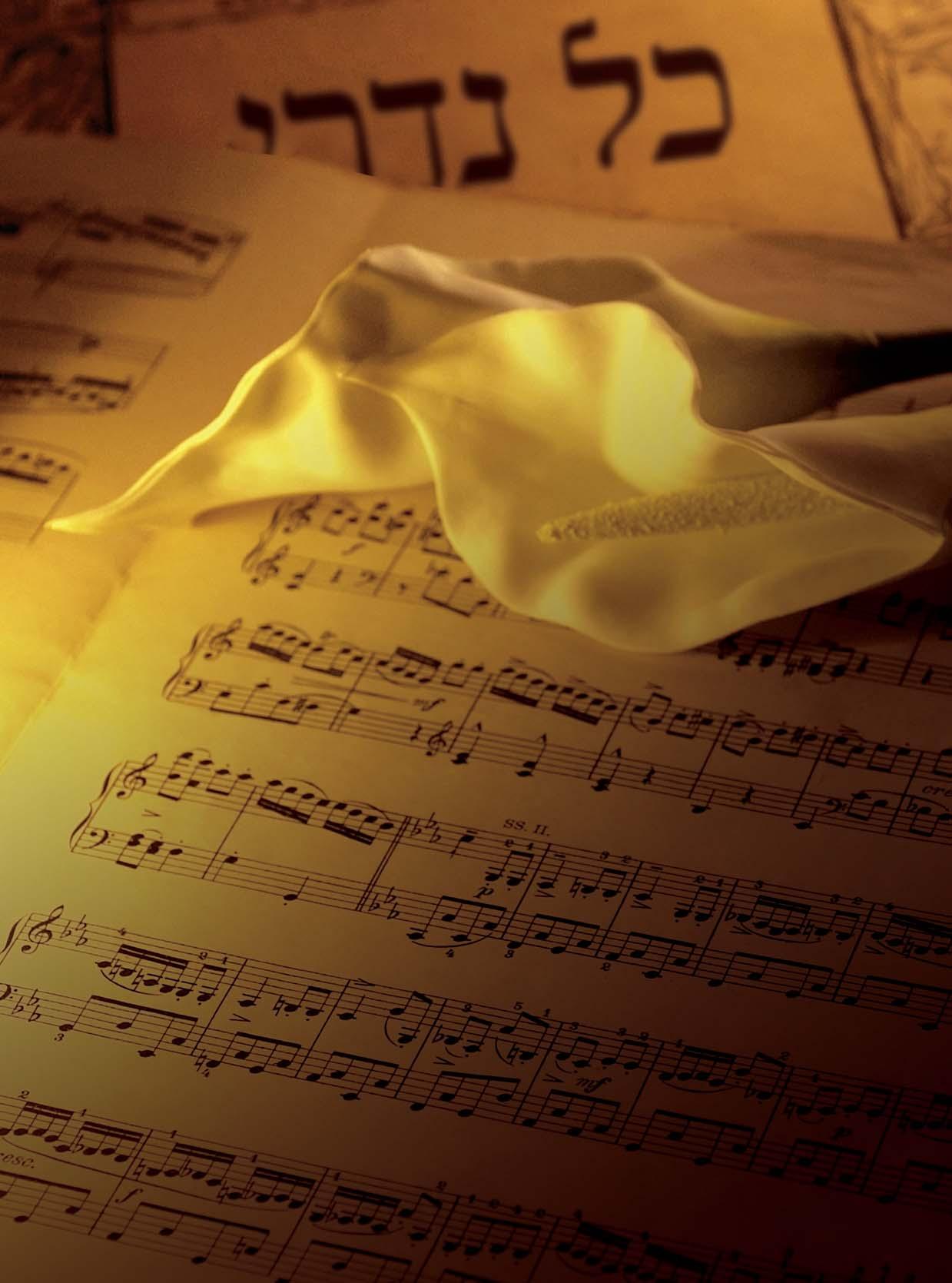
Kosher Music
 By Cantor Sherwood Goffin Faculty, Belz School of Jewish Music RIETS, Yeshiva University Cantor, Lincoln Square Synagogue, New York City (1965-Present)
By Cantor Sherwood Goffin Faculty, Belz School of Jewish Music RIETS, Yeshiva University Cantor, Lincoln Square Synagogue, New York City (1965-Present)
Foreword
It is amazing to me that I am writing for a publication produced by ~ Kosher Certification, where Rabbi Berel Levy (ob”m) took the helm over 40 years ago. In a way, I would not be capable today of such a task were it not for Rabbi Levy! Let me explain.
In 1943, in New Haven, Connecticut, a young Rabbi Berel Levy became founding principal of the fledgling New Haven Yeshiva Achei Tmimim Lubavitch—The New Haven Hebrew Day School. In those days it was almost unheard of to find an elementary Yeshiva Day School outside of a metropolitan area. Yet, in 1945, when the time came for my parents to enroll me in kindergarten at the precocious age of “not yet” four years old, the school already existed and it was recommended that I should be placed in Rabbi Levy’s school! Soon thereafter, Rabbi Levy left for greener pastures, and the new headmaster was Rabbi Moshe Hecht (ob”m) who had me tested at Yale’s Gesell Institute of Child Development before allowing
me to enter first grade in 1946 at the age of four years, eleven months and 18 days! Little did anyone imagine then that, someday, I would be writing an article for Kosher Spirit, the magazine of ~ Kosher Certification, where Rabbi Levy took the helm sometime after he left New Haven! As the saying goes: “What goes around comes around.” Were it not for that small Yeshiva Day School, I would probably not be an observant Jew today—certainly not the chazzan of 44 years at Lincoln Square Synagogue in New York, one of the most prestigious shuls in America; a formerly well-known Hebrew folksong concert and recording artist; and, now a faculty member of the Belz School of Jewish Music at Yeshiva University. But Rabbi Berel Levy did agree to start such a school, and here I am today!
It is with a sense of hakaras hatov that I present the following analysis of the music of the Yomim Noroim. I hope you will find it enlightening, and that Rabbi Levy (ob”m) from his heavenly abode, will “shep” a little “nachas.”
www.OK.org • 5
TThe Music of the YomimNoroim
The liturgical music, or Nusach HaTefillah, of the Yomim Noroim is the most profound of the entire year and contains some of the oldest musical elements in our tradition. It requires an expert Baal Tefillah who intimately knows the sanctified melodies of these tefillos, and it is therefore completely inappropriate for any synagogue to choose a chazzan who is improperly trained in the intricacies of the musical nusach. Needless to say, this pertains all year-around, for every tefillah. However, the lack of competency in a Shliach Tzibbur is more acutely felt on the Days of Awe in every shul and shtible in every corner of the world, and is emphasized in the words of our gedolim throughout the millennia.
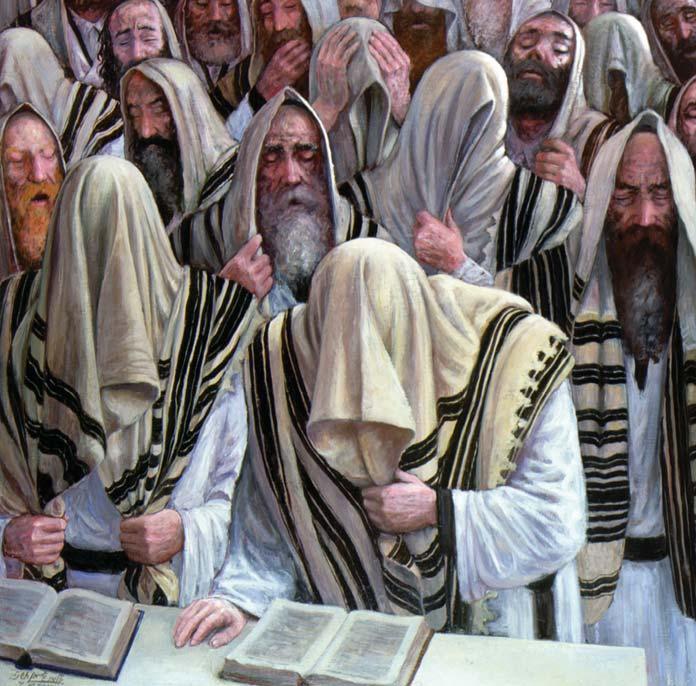
It is the intent of this article to give the average rabbi/layman a “crash course” in the guidelines concerning this relatively unchangeable and halachically mandated field of musical expertise. While it is impossible to illustrate the actual music of the tefillos in a written article, I will try to describe to youthe musical history and halachic guidelines for the sacred musical themes that have been heard in shuls in every corner of the Ashkenazi world for the last millennium. (Audio clips will be available through the Kosher Spirit website, www.kosherspirit.com.)

The Maharil
To put this topic into the proper perspective, it is necessary to open to the ShulchanOruch, 619, and the glosses of the Rama at that point. As he does in almost every area of Hilchos Tefillah, the Rama here paraphrases a quote from the Maharil: “V’al yishaneh odom miminhag hoir, afilu b’niggunim….” “One may not change the custom of a community, even as to its customary prayer-melodies (Nusach HaTefillah).”
The Maharil, Rabbi Yaakov HaLevi Möllin, (b. Mainz, 1356(?), d. Worms, 1427), the first to bear the title of “Moreinu,” was the Chief Rabbi of the Rhineland during the years after the Nine Crusades (1096-1272), and in the midst of the terrible period of the plague of the Black Death which began in the 1340’s. As a result of these two catastrophic events, Jews from all over Europe fled to the cities of the Rhineland to join their fellow co-religionists in the largest Jewish cities in Europe for protection and consolation. These cities were Speyer, Worms and Mainz, known as the “Irei Shum,” where the tradition of Rabbi Meir of Rothenberg over one-hundred years prior still resonated, and whom the Maharil followed as his spiritual guide.
Rabbi Adin Steinzaltz writes that, “…also being one of the great prayer leaders of his time, he (the Maharil) traveled from one community to another, reestablishing the traditional prayer melodies. By virtue of his great authority, the Maharil succeeded in laying the foundations for the prayer rite accepted by all Ashkenazi communities….”
The Maharil also served as a chazzan, which was often the custom of rabbinical leaders since the time of Rabbi Yehuda Gaon of the Yeshiva of Sura in the 8th century. The Maharil was distressed by the incursion of many “foreign” melodies into the musical liturgy of the synagogues of his time. Over a period of many years he carefully interviewed immigrant Baalei Tefillah from all over Europe to determine which time-honored melodies were the authentic tradition, and discarded those that were incompatible with the consensus. He then sanctified those melodies that he determined were authentic with the title “MiSinai,” to emphasize their ancient and immutable quality.1 In his SeferHaMaharil, compiled by his student Eliezer Ben Yaakov,2 he declares
6• www.OK.org
categorically the rule that one may not change the traditional melodies (nusach) of a community. Let me say at this point that many poskim have opined that this declaration applies all through the calendar year. For this article, we will confine ourselves to the High Holidays.
The “MiSinai”Melodies
There are approximately fifty-two known “MiSinai”melodies (perhaps as many as over one hundred) that can be identified. Many are “motifs”, musical phrases, which are repeated in different texts, but almost all of which are traceable to the time of the Maharil or the Maharam of Rothenberg before him. They were often referred to by the past generations of Baalei Tefillah as “Scarbova”, from the Slavic word “skarb”, which means “(from the) treasure”, “official”, or a corruption of the word “sacra”, “sacred”. Most of these melodies are for the Yomim Noroim and some are sanctified in the tefillos of the rest of the year. Until the early eighteenth century this was an exclusively oral tradition because chazzanim were not trained in the art of transcribing music, with rare exceptions (such as Solomon Rossi, 1587-1628 CE, who wrote his music in the tradition of the Sfardim). These melodies were a closely guarded treasure, and each Baal Tefillah carefully handed down the tradition he had learned from generation to generation with relative accuracy. While having been gathered originally in Ashkenaz (Germany), as the population moved eastward because of persecution and pogroms these melodies were transmitted to the East European community and essentially became the hallmark of the tefillah of the entire European Jewish community. This includes the musical style of every paragraph of the tefillos in the machzor and siddur for the entire cycle of the year.
As American Jews, we are the inheritors of the East European minhag and we are therefore required to follow that tradition in our davening. This is our “MinhagHaMakom.” We must insist that our Baalei Tefilla be well-versed in the MiSinai melodies that nurtured the souls of our father’s generation, our grandfather’s generation and the generations before them. No one has the right to discard even one of these sacred melodies of our tefillah.
This applies to our Shabbos and Yom Tovtefillos as well, although most of these tefillos only have rules for the musical style, or mode of each paragraph (major, minor, phreigish, etc.), rather than an actual melody. This also allows talented chazzanim to insert congregational melodies that fit into the given mode, but additions that should only be done with careful forethought. There are various tefillos outside of the Yomim Noroim that have fixed melodies, primarily for the Kaddishim and for some major tefillos, such as Tal, Geshem, etc. This also includes the “concluding phrases” of many of the tefillos. The requirement to keep the traditional nusach applies throughout the year, for every prayer, at every service!3
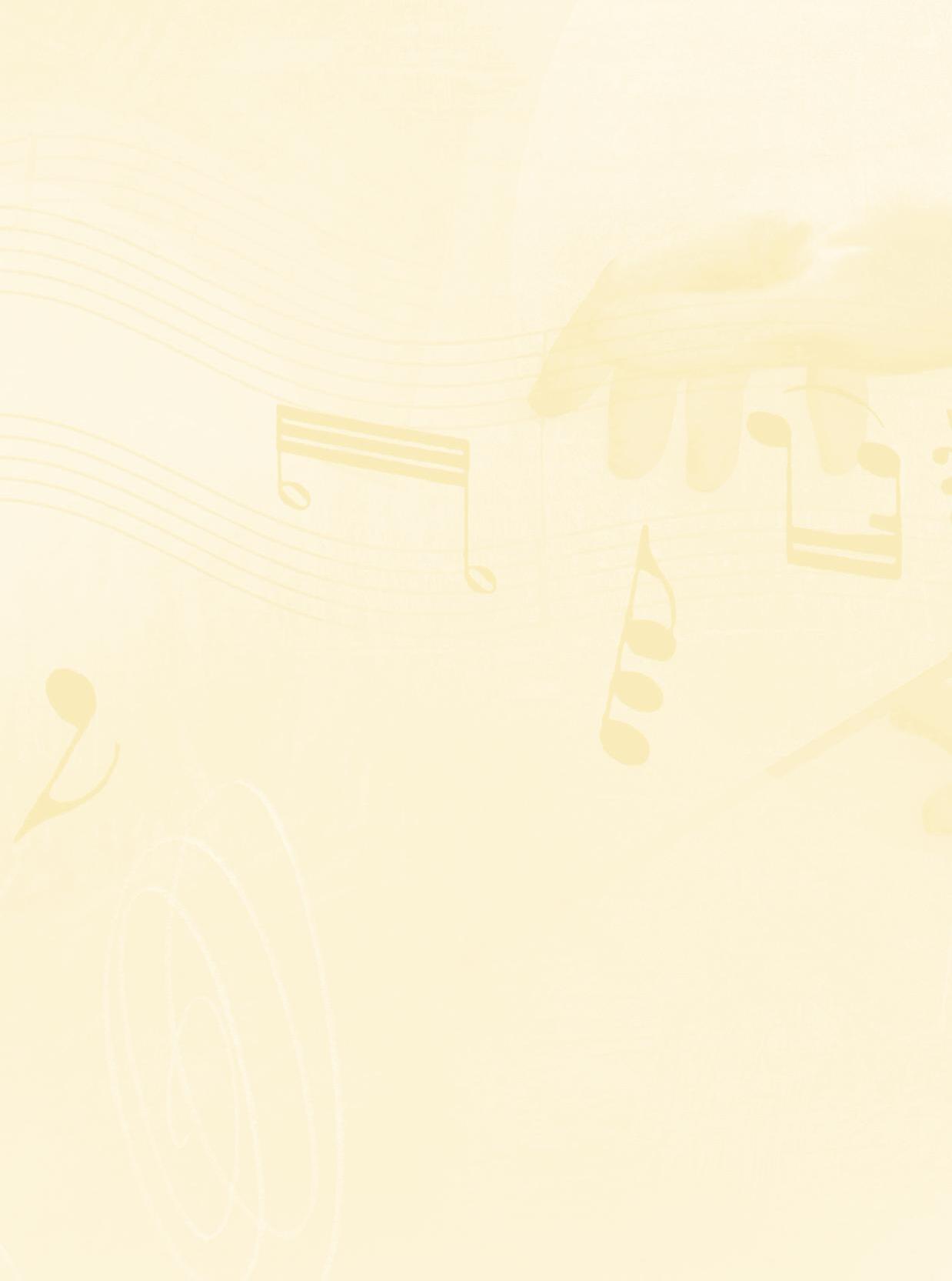
Sampling of other MiSinai Melodies
YomimNoroim
• Hamelech—Its melody was first set by Rabbi Meir of Rothenberg (1215-1293) and finalized by the Maharil.


• Avos—Melody also established by R’ Meir. Contains many “MiSinai” elements and motifs.
• Mussaf Kaddish—Originally similar to Tal/Geshem. By the time of the Maharil it became gradually differentiated to provide a specialized musical theme for each service.
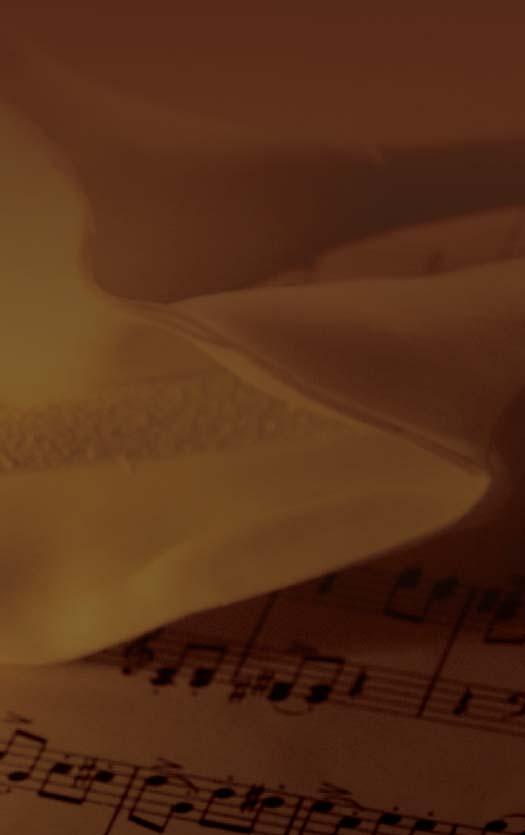
• V’Hakohanim—Intended to replicate the service in the Holy Temple. This musical theme is heard again in the Mussaf Kedusha (Kvodo, etc.) and in various other settings.
• Motifs such as “Hashem Melech”, similar to the Neilah theme, and “S’lach lanu,” also heard at ”Sh’vikin Sh’visin,” and elsewhere.
• Ochilo LoKeil Theme—also heard in “Asisi”, “Yoreisi,” “Eimecho Nososi,” and elsewhere.
• Piyyutim such as Aapid, Eder Vohod, Esa Dei.
• Ancient texts such as Ato Hu Elokeinu and L’Keil Orech Din
• Yotzros and the Avodah of Yomim Noroim
• Selichos; V’nislach; Vidui, and many others.
Shabbos & Festivals
• Festival Themes
• Mussaf Kaddish for the entire yearly cycle, such as the Kaddish before ShabbosMussaf
• Bor’chu themes
• Kedusha modes
www.OK.org • 7
Hear samples of the music discussed in this article online at: www.KosherSpirit.org
The YomimNoroim Ma’ariv,Bor’chu
It is Ma’ariv, the first night of Rosh Hashana. The chazzan begins to sing the familiar, beloved melody of the Yomim Noroim Bor’chu: “Ah...♪… ♫...♪…♪...♪…….” The melody permeates the atmosphere of the shul and uplifts the hearts of all present. Where did this melody come from, and how old is it? How many generations of Jews began their New Year with this profound introduction to the liturgy of the High Holidays? There are few melodies like this, that by simply hearing them, the listener attains the palpable, visceral recognition that we are no longer in the mundane cycle of our weekday, but that we have now entered the lofty heights of the holiest days of the year – the beginning of the “Days of Awe” – immersing us in an aura of holiness and sacred prayer.
Charlemagne and The Source of The Melody
It may shock you to know that this majestic, magnificent melody may possibly stem from a non-Jewish source! We do know for certain that it is more than eleven centuries old, having first appeared in the 8th and 9th century in the Europe of Emperor Charlemagne (742-814). He imported the rabbinic leaders of Italy and Babylon, R. Kalonymos and R. Machir who composed prayers and set melodies to them based on their ancient traditions that eventually were sanctified by the Maharil.4 One of these sanctified melodies is that of the Ma’ariv Yomim Noroim Bor’chu, whose origin is a question of, “What came first, the chicken or the egg?”
There is, consequently, the distinct possibility that melodies such

as the Ma’ariv Yomim Noroim Bor’chu may truly have come from the Jewish community. Even though its earliest written source is a book of non-Jewish songs, that was only because until the 18th century, Jews generally did not know how to transcribe music. Therefore, when this majestic, sacred melody of the High Holidays is sung in shul, you can sing along with confidence that not only has it been sanctified by Jewish tradition, but that it is very possibly an authentic, ancient Jewish melody that is well over 1200 years old!
The KolNidre
The Music of the Kol Nidre, the last of the “MiSinai”melodies,is one of the most profoundly emotional melodies of our entire liturgy. No other synagogue prayer has such an impact on the listener — arousing, uplifting, and inspiring passions that well up from the innermost depths of emotion for the entire congregation. What makes this prayer so important to the average congregant, who is drawn to the synagogue (on time!) with anticipation, trepidation, and awe?
The melody as heard today in the Ashkenazi synagogue did not exist in its present form until the middle of the 15th or 16th century. (Sephardi Jews recite it to a completely different tune!). It is the very last “MiSinai” melody incorporated into the list of the sacred Niggunei Maharil, even though it was finalized many years after the period of the Maharil. We do know that the singing of this “declaration” was instituted by Rabbi Yehuda Gaon in the 8th Century, to be sung to a (non-specific) melody by his chazzan in the academy of Sura, Babylonia. According to the 11th Century Machzor Vitry of Simcha ben-Shmuel, it was to be chanted three times: first, in a low and soft voice, then gradually increasing with each repetition to full voice. This represents the entrance
of a subject into the King’s palace with trepidation and his eventual standing before his King with confidence. In the Sefer Maharil, the Maharil is described as singing the text with “various tunes” over and over again until nightfall: “yaarich bo b’niggunim,”indicative of the fact that no fully set tune was as yet established in the Maharil’s time. The first mention of an established melody for Kol Nidre is found in the Levush of Rabbi Mordechai Jaffe of Prague (15301612), who writes of “a widely accepted tune” known to the chazzanim of his time. The earliest notation of this melody is from 1765, written down by Cantor Aaron Beer of Berlin (1738-1821).
The Component Parts of KolNidre
Upon analysis it appears to have been formulated from an amalgam of other MiSinai niggunim and Taamei HaMikra (Trope) of the Torah and Haftarah. It is clear that the Jews of France and the Rhineland in the 15th century adapted the concluding phrase of the “Great” Aleinu (see below) for the Kol Nidre, (as well as for the first paragraph of the Yomim NoroimAvos). This phrase has a triumphant character, which is appropriate for “Haboh Aleinu L’Tova,” “May it come upon us for good,” and for use as a typical end of sentence motif.
The opening musical phrase of the Kol Nidre was likely taken from the HaMelech of Shacharis – one of the great MiSinai/Scarbova melodies discussed above. It can also be heard in the melody of the opening phrase of the Kaddish before Mussaf of the YomimNoroim. Professor Abraham Z. Idelsohn has written that it was a chazzanin 15th/16th century Southwest Germany who “voiced the sentiments of the terror-stricken Marranos, as they recited the Kol Nidre in a touching tune which expresses the fear, terror, fervent plead-
8• www.OK.org
A selection of some of the “MiSinai” Nigunim of the Yomim Noroim:
ing and stern hope for ultimate salvation.” Throughout the world, the profound melody of this lofty prayer is recognized as one of Judaism’s most signature contributions to song and prayer.

As we are about to endure the fast of Yom Kippur, the average Jew is acutely aware that his prayers may well have an impact on the coming year in pleas for health, prosperity, peace and tranquility. It is with trepidation and a prayerful hope for the future that the Jew is drawn to this solemn melodic declaration at the onset of the holiest day of the year.
The “Great” Aleinu History
The text of Aleinu was originally composed for Mussaf of Yomim Noroim in the third century C.E., in Babylonia. The hauntingly powerful musical setting of the text was already known during the years of the third Crusade (1187-1192 C.E.) led by King Richard the Lionheart, having developed in the centuries prior to that. During the period of the Nine Crusades (1096-1272 C.E.), many of the communities of the Rhineland were attacked by the marauding Christian army and forced to convert to Christianity. Those Jews who refused were murdered or burned at the stake. In Emek Habacha of Yosef HaKohen (1496-1528) he quotes a letter to the tosafist and last of the

Footnotes
2. Also known as Zalman of St. Goar.
3.In the writings of the halachic authorities of past centuries, we often see references to the importance of davening within the traditional guidelines. One example is from the Mateh Ephraim of the renown Rabbi Ephraim Margolioth of Brody, Ukraine (17601828) who writes, “...and if he (the chazzan) thinks that his own melodies are more pleasant than
Geonim, Rabbi Jacob of Orleans (d.9/3/1189), wherein an eyewitness describes such an event in the town of Blois, France in 1171 C.E. At a mass execution at the stake of many of the Jewish townspeople, the Christian knights listened in awe as the dying martyrs sang a “mysterious song.” When asked, the remaining Jews told them that this was the song of their “Aleinu”. The knight executors and their French collaborators were so impressed, that they incorporated this melody into the French Church Mass, which can be heard to this very day. This disturbing historical fact verifies the ancientness of this melody.
The “electric” power of this sanctified melody, one of the oldest of our “MiSinai” tunes, introduces and prepares the listener for the most important and sublime prayer of the Amidah, the central paragraphs of the Kedushas Hayom section. Its impact is so great that this theme is heard again and again throughout the Yomim Noroim in tefillos such as the Kol Nidre, the first section of the repetition of the Amida (Avos and Ge-
the traditional melodies, he will be punished by Heaven for this!” There is no question that our rabbinical leaders were concerned about maintaining the hallowed musical tradition of our davening It was unthinkable that anyone would want to change these melodies, and as an absolute, immutable, irrevocable rule of tefillah, it was considered unnecessary to discuss! It was, therefore, rarely voiced as a concern in most of the halachic works of the millennia.
4.Desirous of fostering commerce with the nations of the Middle East, and convinced that the Jews would be the conduit to Middle
vuros), and elsewhere throughout the Machzor. The sublime magnetism of this ancient tefillah stands in stark contrast to the simplistic opening and closing phrases of the contemporary tune for Aleinu sung in our shuls every Shabbos. No example better illustrates the chasm separating our “MiSinai”tradition from the corpus of mundane melodies chosen by too many in today’s congregations.
There are few melodies anywhere in the world that can compare with the lofty serenity and holiness of these sanctified, time-honored “MiSinai”themes. The soul of the Jew responds to them, and the melodies, in turn, enter the hearts of their listeners and have a profound effect upon them. It is that very impact that the Maharil recognized and endeavored so mightily to preserve, so that each year and throughout the year the Jew could be brought closer to the ideal of Teshuvah, Tefillah and Tzedakah, the formula that can overturn the negative decree and grant us all a good and blessed New Year.
V’chein Y’hi Ratson! ~
East commerce with Babylonia, Persia, Egypt, Turkey, etc., he decided to encourage the growth of the miniscule Jewish population in the Rhineland bordering France and Germany. In order to attract Jewish settlement, Charlemagne imported world-renown rabbinic leaders and their families whom, he correctly surmised, would attract Jews who would move to this new community. He first chose the Kalonymos family of Italy, led by the foremost Italian Rabbinic scholar Rabbi Kalonymos and his son Meshullam, as well as Rabbi Machir of Babylon. He settled the Kalonymos family in Mainz, Germany, and the Machirs in Narbonne, Southern
France. Each brought with them numerous Talmudists, poets and theologians in their wake. Their leadership elevated and preserved the Rhineland Kehillah, which gradually became the largest in the early medieval Europe, and established its customs. These oriental rabbis were also chazzanim and poets (paytanim), composing poems and melodies based on the ancient traditions they had brought with them. As we mentioned before, many of these melodies were preserved as our “MiSinai” melodies (primarily of the High Holidays and festivals) guided by the dictum of the Maharil, and formed the basis of our Minhag Ashkenaz to this day.
www.OK.org • 9
1. This appellation (“MiSinai”) was first coined by Rabbi Yehuda HaChassid (1150-1217), a descendent of the illustrious Kalonymous family, in his Sefer Hachassidim
KS: Tell us about how the ~ set up the Yankee Stadium kosher food program.
RNM: It was a challenge to properly set up the kosher program at Yankee Stadium, though we were involved even before construction of the new stadium was complete and were advising the Yankees food service division on how best to design an efficient, designated kosher kitchen. There is also a lot of non-kosher food served at the stadium and the Yankees have a rigid protocol of how things are to be done, including how
food is served, stored, ordered, presented, etc. To ensure that kosher food and equipment would be completely segregated, a lot of work and thought went into how to best set everything up and how to comply with Yankee protocol — which actually enhanced the kosher program!
KS: That sounds like a lot of work. How many mashgichim does the ~ have at a typical Yankee game?

RNM: We have six or seven mashgichim per game, plus one runner. A mashgiach has to be at each concession stand at all times, along
with at least one other food service worker. The runner fills in for any mashgiach that has to step away from his post for a minute.
KS: So you really have your bases covered (no pun intended of course)! How is all the kosher food prepared and delivered to the concession stands?
RNM: There are four concession stands, plus the private and exclusive Legends section. All of the food for the concession stands is prepared before the game and brought in sealed
Interview with Rabbi Naftali Marrus, Rabbinic Coordinator – Restaurants & Catering
10• www.OK.org
Rabbi Chaim Fogelman sat down with Rabbi Naftali Marrus, who managed to squeeze in some time for Kosher Spirit despite his very busy schedule of visiting restaurants & catering establishments in the tri-state area and beyond.
hot boxes that the mashgiach opens at the stand. (Some mashgichim arrive at 5:00a.m. for a day game and some leave at 12:30a.m. after a night game). The mashgiach has a log-sheet to check that everything in the box is on the list. This requires extensive preparation and planning because if the stand runs out of food during the game, no more food will be delivered during the game to that particular stand.
All of the meat is Chassidishe shechita and all rolls are hamotzi and Pas Yisroel. Cups are also provided for washing the hands and there are separate ketchup and mustard packets so kosher consumers don’t even have to go to the regular condiment stands. The kosher kitchen is on a separate floor from the non-kosher kitchens and is closed and sealed by ~ personnel when not in use. All concession stands and equipment are likewise stored in a designated and sealed warehouse when not in use. No kosher food is available on Shabbos or Yom Tov games.
KS: Tell us a little bit about the Legends section and luxur y suites…

RNM: Legends is an upscale seating and dining area in the stadium. Within the Legends section, there are non-kosher buffet ‘action stations’ and one kosher ‘action station.’ The mashgiach or station attendant serves all kosher food. The kosher station also has a surrounding glass shield to prevent anybody from serving themselves and accidentally use a nonkosher utensil. In addition, the kosher plates are distinct: square, black plastic, while the regular plates are round, white china plates. If someone wants more food from the kosher station, a new plate is used and the old plate discarded. There is also waiter service to the seating area and fresh, hot kosher meals are delivered sealed with the ~ seal. There is a different menu available each night during the pre-game, though during the game there is the traditional stadium food - hotdogs, sliders, sandwiches, etc.

There are unique challenges in the
luxury suites because they are rented out either per season or per game. The mashgiach checks the suite to make sure there are no nonkosher utensils or equipment in the room before bringing in the kosher food and hot dog machine. All food is individually wrapped and sealed and served on plastic plates. The ceramic serving platters are always brand new for kosher service. Each platter has a mark on it that comes off in the dishwasher so that the mashgiach can ensure that the platter is brand new. Customers can order a wide variety of meat or pareve meals (though pareve is cold only).
KS: That sounds fabulous! Who is the caterer that makes all of this delicious kosher food?
RNM: Ouri Nidam of Ouri’s Sports Kosher Catering is an Israeli with many years of catering experience, and the exclusive kosher catering company at Yankee Stadium. He has served many famous people (including Israeli Prime Ministers) and was already under ~ supervision before getting involved with Yankee Stadium. Ouri pays great attention to detail and knows how to follow ~ protocol and satisfy the Yankees at the same time.
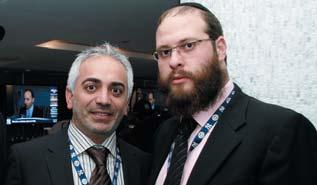
The Yankees have provided food service for many years and have a heavily detailed protocol and to establish a kosher program the ~ required changes to many items. There have been many obstacles and challenges, but the Yankees have been working with the ~ to satisfy even the most meticulous kosher consumer with the highest level of kashrus. The Yankees should be applauded for taking the steps to provide a top-notch kosher program and extending the warmest invitation to welcome the kosher consumer to Yankee Stadium.
Rabbi Marrus and the ~ would like to extend a special thank you to: Ike S. Franco, Dan Smith, Mike Phillips (Sr. VP), Don Muszalski (GM Premium Services), Anthony Parnaglan (GM Concessions) and Chef Rolf ~

www.OK.org • 11
By Rabbi Don Yoel Levy
ecently, the ~ was approached to give a hechsher on a makeup powder that would permit use on Shabbos and Yom Tov. The topic of using colored makeup on Shabbos is discussed in Shulchan Oruch Orech Chaim, Siman 303, S’eif 25, where it is specifically stated that it is forbidden for a woman to color her face with srak (a red color) on Shabbos.

According to halacha, there are three types of coloring. The first type is coloring that lasts – for example, dyeing cloth where the color is expected to last. This is considered the primary issur of dyeing.
The second type is dyeing or coloring something that does not last, such as metal. This is also forbidden according to the Rambam, even though it does not last.
The third type of coloring is unintentional, or undesired, coloring. For example, eating strawberries and having one’s hands colored while eating is not considered coloring, as the coloring of one’s hands is not the “way” of coloring and one actually does not want the color on one’s hands.
A woman who uses “paint” (makeup) to color her face is considered coloring in the normal way, even though it does not last for a long time since, according to Shulchan Oruch, one is required to wash one’s face once a day.
Ma√eup
Halachic Issues of
The use of powder makeup is subject to much debate. According to one major rabbinic authority, powder can be permissible on Shabbos, even though it contains coloring. Since it does not really stick to one’s skin like paint, therefore, it is not even considered “non-permanent coloring.” Other rabbonim hold that only white powder is permitted. Some major authorities are even more stringent and hold that any coloring, even powder, is forbidden.
Even those who permit plain, unadulterated colored powder do so only under certain circumstances:
The powder is not put on top of makeup that was put on before Shabbos
This is because the powder will now stick to the base and be more lasting.
The powder is pure powder with no additives, such as oil based additives that

on Shabbos & Yom Tov
12• www.OK.org
will cause the powder to stick.
The powder submitted to the ~ for certification was not a pure powder, but one with other ingredients. An ~ Rabbinic Coordinator who also holds a Master of Science in chemistry investigated the ingredients and felt that some of them would indeed be considered something that would make the powder stick to the skin. In addition, the powder definitely had an oily feel when put on one’s skin.
After consultations with various rabbinic authorities, we felt the following pitfalls would be too great for the ~ to certify the product:
The present powder was not acceptable due to added ingredients. Even if we could get pure powder, one might use it on top of makeup that was put on before Shabbos.
Not all rabbinic authorities are in agreement that any powder makeup is permissible.
Ladies seeing a Rebbitzen using the product on Shabbos might come to the mistaken conclusion that other makeup is permissible.
While discussing powder makeup with my daughters, they informed me of a different type of makeup used by women today, which has a completely different “din” – permanent makeup. (Note: The issue of permanent makeup is different from the issue of “Shabbos makeup.” The halachic issues are due to two different issurim.) In fact, when I heard about it, I was shocked to hear that there are people in the frum community who use this!
There are a few different uses for permanent makeup. It can be used to permanently color the area above the browbone to look like eyebrows, or it can be used in place of eyeliner, lipliner or other areas where one would use coloring.
Below are some quotes from companies who offer this service describing the actual process:
“Permanent makeup is a cosmetic technique which employs tattoos (permanent pigmentation of the dermis) as a means of producing de-
signs that resemble makeup, such as eyelining and other permanent enhancing colors to the skin of the face, lips, and eyelids. It is also used to produce artificial eyebrows, particularly in people who have lost it as a consequence of old age, disease, such as alopecia, chemotherapy, or a genetic disturbance, and to disguise scars and white spots in the skin such as in vitiligo.”
“In the permanent makeup process, pigment is implanted into the upper dermal layer of the skin. In order to reach this area, pigment must be implanted through the epidermis, or outer layer, of the skin, which is the layer that collects and later exfoliates or sheds dead skin cells.”
“Permanent makeup is micro pigment implementation — a process involving application of permanent pigment into the dermal layer of the skin. Natural iron oxide is used in the pigment. A sterilized needle is used to implant hundreds of tiny dots of the pigment beneath the basal layer of the skin. The procedure takes about a couple of hours.”
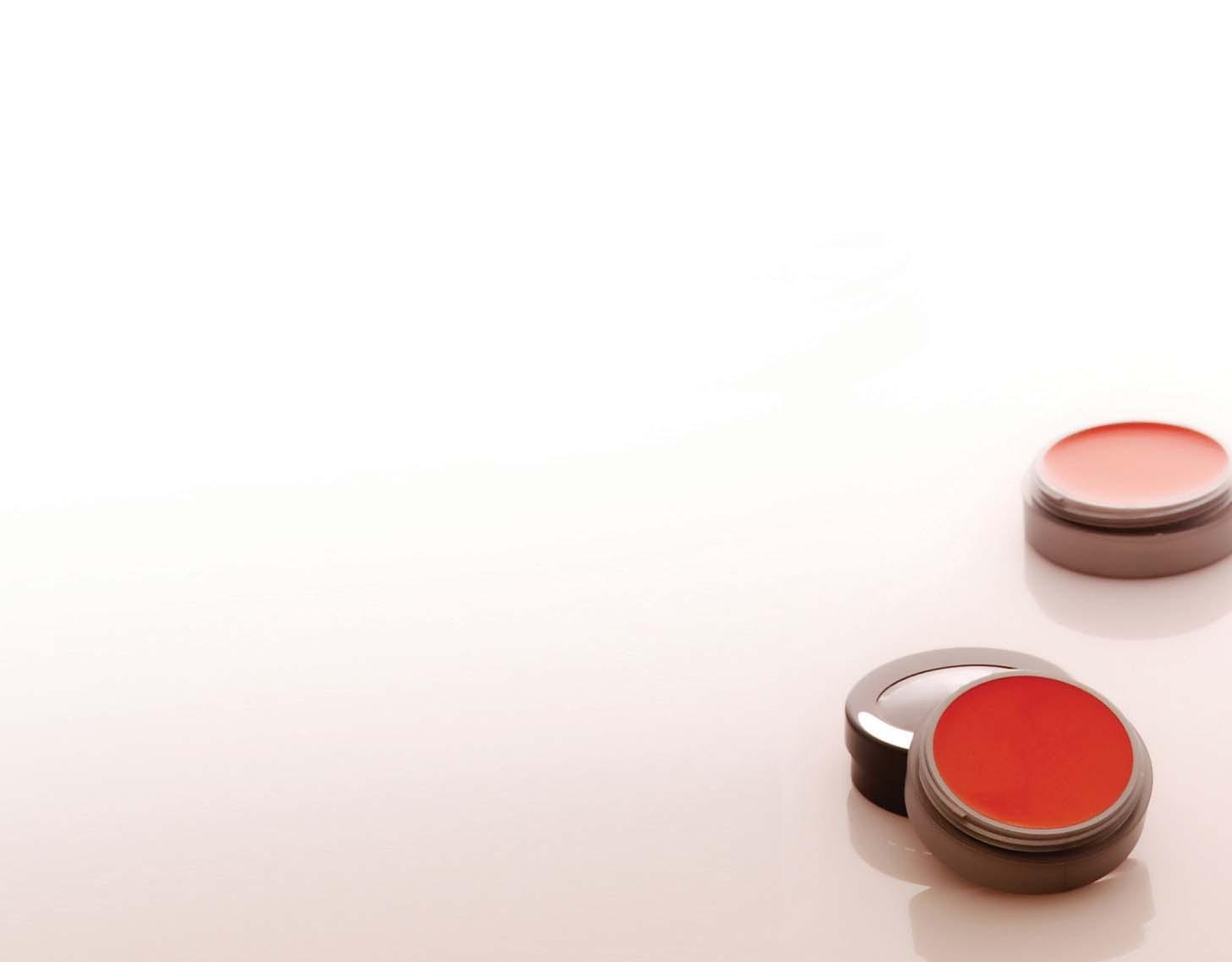
“As with tattoos, permanent makeup can be difficult to remove. Common techniques used for this are laser resurfacing, dermabrasion (physical or chemical exfoliation), and surgical removal. Camouflaging — adding a new pigment which counteracts the tattoo color and attempts to emulate normal skin color is considered a poor choice by professionals. Removal is more painful and laborious than the tattooing itself.”
In Shulchan Oruch Yoreh Deah, Siman 180, it states: “If one scratches one’s skin and then inserts color, or colors the skin and then scratches one’s skin (Shahch 1) so that the skin is now permanently colored, it is forbidden.” This is what we commonly call tattooing.
The abovementioned process of applying permanent makeup is def-
initely a tattooing process, as those performing the service describe it, and is not something that can be done without rabbinical consultation. The topic of tattooing and permanent makeup is quite complex and many rabbonim have discussed this topic, as one can see in Ohr Yisroel Journal, Volume 15, Nissan 5769. Some rabbonim say the eye area is not considered skin (which would only apply to lining the eye, not other skin areas). Other rabbonim say that only permanent application of letters is considered tattooing. In the Nissan 5769 issue of Ohr Yisroel, the editor brings multiple rabbinic opinions, including the most prominent posek of our time, Rabbi Shmuel Vozner shlita, which state specifically that all permanent makeup is forbidden. Likewise, there is a teshuva from Rabbi Chaim Kanievski shlita that it is forbidden.
As we can see, the issue of applying makeup on Shabbos and Yom Tov is extremely complicated and there is no uniform rabbinic ruling on the matter.
Additionally the use of permanent makeup is quite a serious issue. Therefore, if you are a woman who would like to use “Shabbos makeup” or you are contemplating permanent makeup, you are advised to speak with an Orthodox rabbi who has experience with this issue and who can advise you of the proper course. ~
www.OK.org • 13
The use of powder makeup is subject to much debate.
Sweet
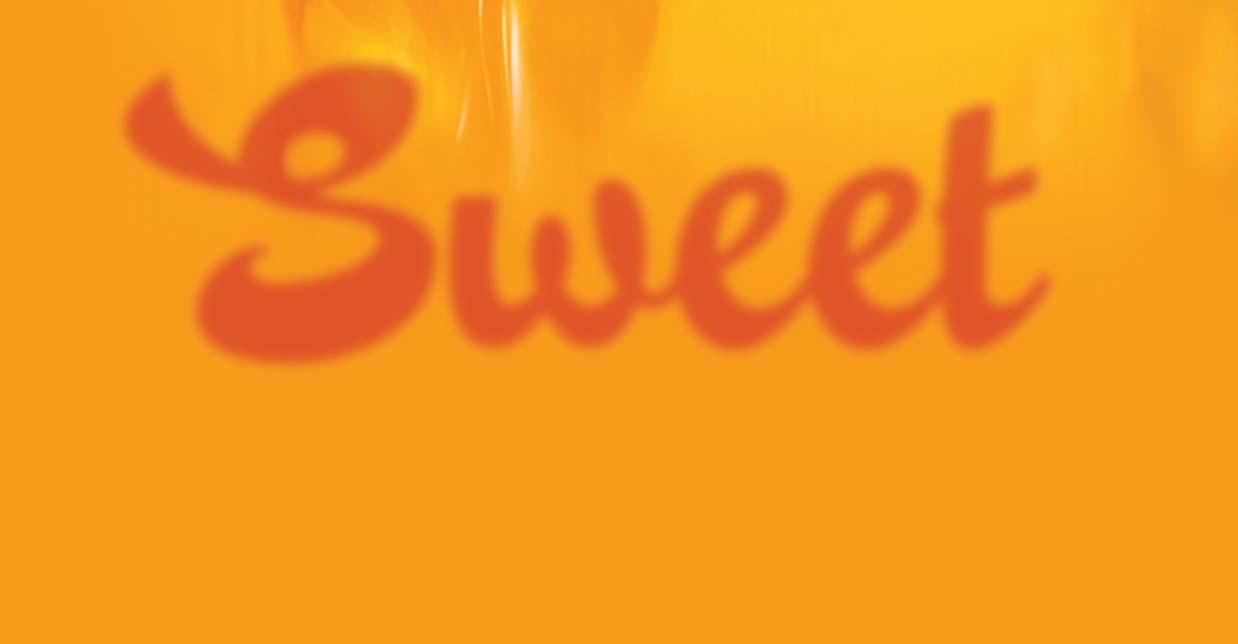
How it is
By Rabbi Yitzchak Gornish

14• www.OK.org
Exploring the History & Kashrus Concerns of Food Sweeteners
Aswe approach the holiday of Rosh Hashanah, the traditional greeting among Jewish people is, “May you be inscribed in the Book of Life.” However, the common greeting has evolved into, “Have a sweet new year.” This is actually a shortened version of the benediction on the custom of eating an apple dipped in honey on Rosh Hashanah eve. Honey, along with other sweeteners, is practically synonymous with the New Year holiday.
It is almost a given that honey (and by extension, all sweeteners) are innocuous regarding kosher concerns. After all, honey is mentioned twelve times in the Torah, especially regarding Eretz Yisroel, which is described as a land flowing with milk and honey.1 Even the mon (manna) tasted like wafers fried in honey.2
The honey mentioned in the Torah is actually the honey of dates3 (more on this later), but there are clear instances of bee honey mentioned as well – from the case of Shimshon collecting honey from the carcass of a slain lion4, to Yonason ben Shaul haMelech dipping his staff into a hive and consuming the honey5. The obvious issue to be analyzed is: Why is bee honey permitted for kosher consumption when it is derived from insects that are non-kosher? There is a halachic rule that the product of a non-kosher animal is itself nonkosher.6 The Gemara wrestles with this question and proposes that honey is not produced in the bee’s body; it is only collected and stored there.7 A second approach is that only flying insects themselves are prohibited and not their excretions.8
While one would assume that 100% pure honey should be totally problem-free regarding kosher, this is only true in the case of commercially obtained honey where the product is collected in bulk. However, on the retail level, unflavored and flavored honeys are usually processed on the same equipment, with the latter requiring a serious kosher certification. In addition, it has been noticed recently that honey can be adulterated with a variety of syrups due to the high price honey fetches on the market. While most syrups will not affect the kosher status of the honey, the addition of corn
syrup would cause the honey to lose its Kosher for Passover status for Ashkenazi Jews. This is one reason one should only buy kosher certified honey.
There are numerous references in the Torah where Torah is proverbially described as sweeter than honey.9 In fact, Shimshon is taunted by the Philistines to describe a substance that is sweeter than honey.10 It might surprise the reader that several food items are sweeter than honey. In the food industry, the sweetness of a substance is measured by its “sweetness value,” with sugar scoring a perfect 100% and acting as the standard for all other sweeteners. Describing the standard as sugar is a misnomer, as sugar is actually a chemistry description of a class of compounds. The correct standard term is sucrose (cane sugar). In fact, several sugars, such as lactose (milk sugar) contain only 16% of the sweetness of sucrose.
Predictably, honey only scores 97% of the sweetness of value of sucrose. It therefore begs the question, why isn’t the ultimate sweetness standard in the Torah sucrose? The obvious answer is that while the collection of bee honey has been documented since ancient times (there are inscriptions in Egyptian tombs showing the collection of honey), the earliest recording of cane sugar collecting is in the 14th century in Arabia. From there, cane sugar spread to Europe and beyond. Honey was therefore the sweetest substance known to the biblical figures. It is interesting to note that there is no literal mention of sugar in the Torah!
While we mentioned that in the Torah, the predominant honey was derived from dates, in Talmudic times it shifted to bee honey. The Gemara states that were someone to take an oath to abstain from honey, he is permitted to consume date honey as this is an uncommon form of honey and was therefore not included in the oath.11 It is possible that date honey contains a higher ratio of fructose (1.73 times higher sweetness value than sucrose) to glucose than bee honey (making it sweeter than bee honey), since fructose is a fruit sugar and is therefore sweeter.
Generally, sweeteners are broken into two groups –

www.OK.org • 15
nutritive and non-nutritive. The nutritive group, in addition to sucrose also includes syrups (such as maple, corn, molasses, etc). While years ago, small amounts of lard were added to maple syrup to control foaming, today vegetable oil is utilized instead. Kosher certification is still required for maple syrup, because vegetable oil requires certification. Corn syrup is a blend of fructose and glucose, and is used as a substitute for sucrose, which fetches a high price due to domestic import quotas. Since the fructose portion contributes the higher sweetness value, producers use enzymes (which require a hashgocha) to convert some of the glucose into fructose (high fructose corn syrup), increasing the syrup’s sweetness value. Obviously, corn syrup is not permitted to Ashkenazi Jews during Passover. Since nutritive sweeteners have a high caloric content (as well as being a contributor to tooth decay), sugars can be converted to sugar alcohol, which is lower in calories and less apt to cause tooth decay. The trade-off is that they have a lower sweetness value than sucrose and can cause bloating.
Non-nutritive sweeteners contain no calories and have many times the sweetness values of sucrose. One common retail non-nutritive sweetener is saccharine, which can be ob-

tained in tablet or powdered form and is 300-500 times sweeter than sucrose. The kashrus concerns are that the tablets may contain stearates, which require kosher supervision, and the powdered form (Sweet’N Low) is cut with cream of tartar, which can be derived from non-kosher grape products. While often under hashgocha, many authorities are uncomfortable relying on the leniencies utilized to certify cream of tartar. In addition, the dextrose (added to reduce the sweetness in a packet so as to allow comparisons to sucrose) is definitely forbidden to Ashkenazi Jews on Passover. Dextrose is usually derived from corn (especially in the US), a kitniyos issue, but can also be derived from grain, which would be problematic to all Jews as a chometz derivative. Finally, although the government allows this substance, consumers fear this sweetener because some studies have shown a link with cancer in rats that ingested high amounts of saccharine.
Aspartame is a non-nutritive sweetener that is 180 times sweeter than sucrose. It is sold under the brand names of Nutrasweet and Equal. The main drawback is that it breaks down under heat and thus is unsuitable for baking. Although it has been thoroughly tested by the government and declared safe, health
suspicions swirl around this sweetener as well. The main kashrus concern applies during Passover, because aspartame is also mixed with dextrose.
Sucralose is a non-nutritive sweetener that is 600 times sweeter than sucrose. In fact, it is derived from the chlorination of sucrose, which converts it to a zero-calorie sweetener. It, too, is mixed with maltodextrin or dextrose (a problem on Passover) and sold under the brand name Splenda. Also given the stamp of approval by the government, for many, the government’s approval isn’t enough to dispel health suspicions.
A lesser-known non-nutritive sweetener is stevia, a plant, which is 300 times sweeter than sucrose. Health concerns have limited its availability as a sweetener in many countries, including the US, where it must be listed as a supplement.
It is a custom among many Jews to refrain from eating sharp or bitter foods (such as horseradish, pickles, vinegar, etc.) during Rosh Hashanah and most of Tishrei, and to serve predominantly sweet foods as a focus on a sweet outcome for the New Year. This tradition does not require that foods be sweetened with honey; any of the above listed sweeteners are adequate. The underlying message being that people everywhere should merit a “sweet new year” and an inscription in the Book of Life. ~
1 Shemos 3:8.
2 Shemos 16:31.
3 Gemara, Menachos 84b.
4 Shoftim 14:8-9.
5 Shmuel I 14:27.
6 Gemara, Bechoros 5b.
7 Gemara, Bechoros 7b.
8 ibid.
9 Tehillim 14:10, 119:1-2; Shir HaShirim 4:11; Shoftim 14:18.
10 Shoftim 14:18.
16• www.OK.org
11 Gemara, Nedarim 53a.
Healthy Spirit
Apples
Eating an apple every day can help reduce asthma and allergy symptoms by elevating your quercetin levels. Quercetin is an anti-oxidant that alters the immune response to allergic triggers. Apples can also improve lung health.

Pomegranates
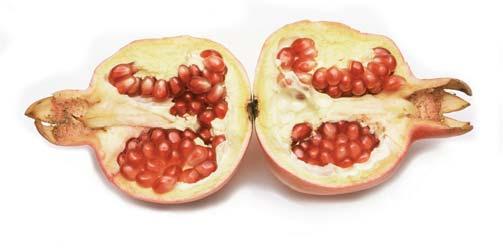
To Be Filled With Merits and Mitzvos
Pomegranates are also a symbol of fertility. Pomegranates are an excellent source of anti-oxidants. When they are not in season, drink pomegranate juice instead.
Carrots

Multiply
In Yiddish, the word for carrot is “merrin,” which also means “to multiply”. Carrots are a good source of alpha-carotene, betacarotene, and beta-cryptoxanthin, which are all essential for strong, healthy bones. Eating a lot of carrots may protect against bone loss as you age.
Honey
For a Sweet Year
Honey is more effective than antibiotics to combat sinusitis! Honey, a source of bacteriafighting hydrogen peroxide, helps mend mucous membranes. The Manuka variety of honey has the highest level of these antioxidants, but all varieties have these benefits. Eat a spoonful of honey, or add it to a cup of tea, 2-3 times per day.
Eating local honey (from pollen in your area) is an effective way to combat seasonal allergies.

(see Rabbi Gornish’s article on page 14 for the kashrus status of honey.)

Use Your Head
Some people have a custom to place the head of a fish on the table on Rosh Hashanah to remind us to be like a head, not a tail.
Wild salmon, a true “super food,” contains omega-3 fatty acids that protect against heart disease, Alzheimer’s, ADHD and depression.
Consumption of Docosahexaenoic Acid (DHA), an omega-3 found in fatty fish, is linked to better brain development in babies. For those expectant mothers who are concerned about mercury in fish, this can be consumed in supplement form.
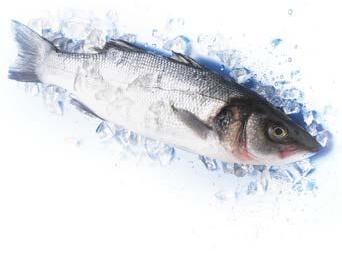
www.OK.org • 17
Traditional Rosh Hashanah Foods
Sleep





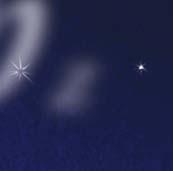

or Not to Sleep
On Rosh Hashanah, many have the custom not to nap during the day, because one might “sleep away one’s mazel” and during Simchas Beis HaShoeva, הניש עט ומעט אל – the Jews did not even “taste the taste of sleep”. While skimping on sleep is ok once in a while, our bodies need adequate sleep each night in order to stay healthy.

SLEEP FACTS











✴ A good night’s sleep (7-8 hours) is crucial for preventing inflammation in the body that can lead to heart disease and diabetes. (See Rambam Hilchos Daios)



✴ If getting 7-8 hours of sleep isn’t possible, regularly taking a nap during the day can lower a person’s risk for coronary heart disease by 37%!
✴ Lack of sleep triggers hormonal shifts that boost hunger and appetite (and make you crave fatty foods, like doughnuts and fries). One 15-year study showed that people who only got 5 hours of sleep per night had 16% lower levels of the hormone leptin (low levels are linked to obesity) than those who slept an average of 7-8 hours per night.
✴ Children 5-11 years old who sleep less than 11 hours per night are more likely to be obese adults than kids who get more sleep.
✴ There is a 25% increase in the number of “snack calories” people consume when they sleep 5.5 hours per night, instead of 8.5 hours.
6
Surprising Reasons You’re Tired
Being tied town to “tech toys” – cell phone, laptop, Blackberry. Take short breaks from these devices. Tuning in to the present moment, taking a walk without your phone, is naturally energizing.
1
or twice a week. This type of workout doesn’t boost your energy. Switch to a lower intensity workout and exercise 3-4 times per week.
2
Not getting enough sleep. Doing 15-30 minutes of stretching exercises 4 times per week reduced sleep problems by 30%.
5 Eating out a lot. Restaurant and fast foods don’t typically have many nutrients that provide all-day energy. Try to see that your food has a lot of fiber and contains lots of fruits and vegetables.
6

Feeling worried about the same issue for a long time. Working through this anxiety is a surefire way to improve your sleep.
3
Not making time for fun. Seeing friends, doing new things and spending time with family are energizing activities .

4






Doing a really intense workout once





In a Dutch study, those who preferred to spend time alone were tired significantly more than their outgoing counterparts.

18• www.OK.org
To
Tzimmes
6 cups raw sweet potatoes, peeled and sliced
6 cups sliced, unpeeled cooking apples
1 1/2 cups carrots, peeled, sliced
1 cup small, pitted prunes, cut in half
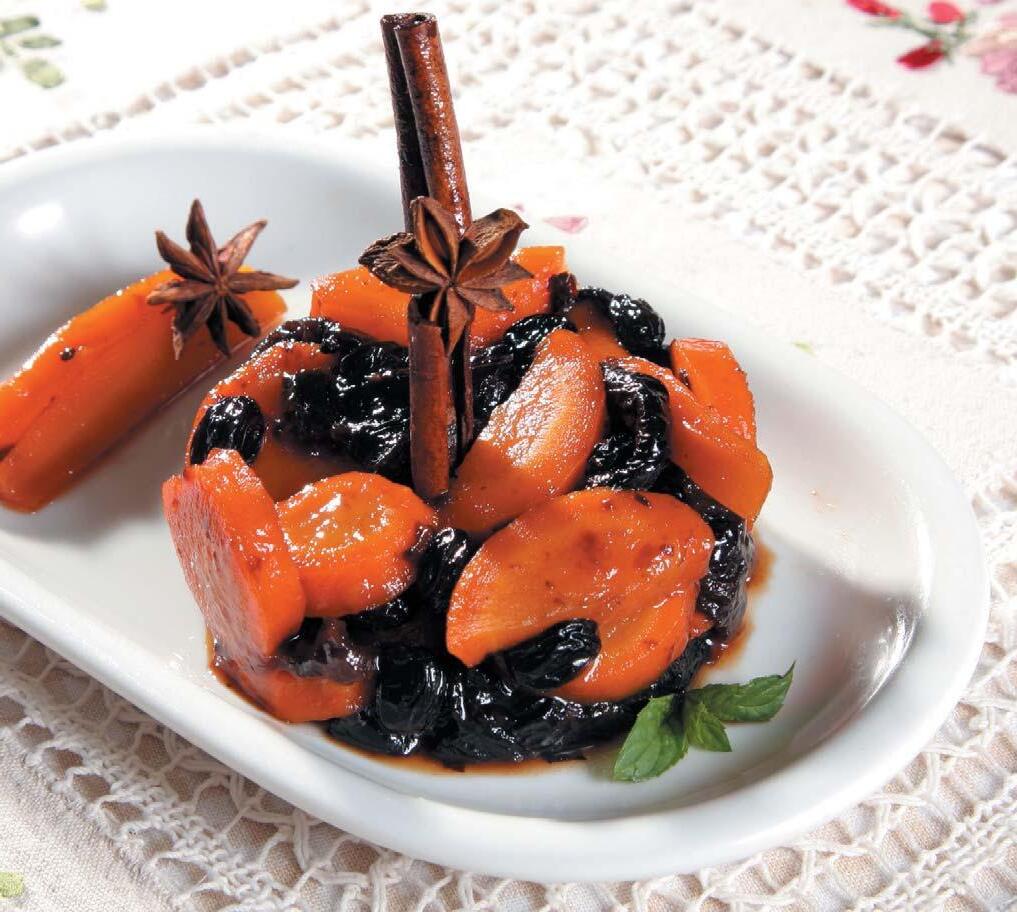
2 tsp. grated orange peel
1/4 cup unsweetened orange juice


1/4 cup honey (optional)
2 Tablespoons light brown sugar
Pinch of cinnamon
Pinch of ground ginger
Cinnamon sticks to garnish (optional)
Preheat the oven to 350º F. Coat a 9”x13” baking pan with a non-stick spray such as Pam. Layer half of the potatoes in the bottom of the pan, overlapping the edges. Repeat with half of the apples, then add half of the carrots and prunes. Repeat layers. Combine remaining ingredients and drizzle evenly over the layers. Cover tightly with a sheet of aluminum foil. Pierce with 8-10 one-inch slits so steam may vent.
Bake for 1 to 1 1/2 hours or until dish is steamed and tender.
T i s h r e i R e c i p e
www.OK.org • 19
MEET OUR STAFF:
BEHIND
WHO’S BEHIND THE ~
Interview with Rabbi Yitzchak Hanoka
~

KS: Where did you grow up? Where did you go to yeshiva?

RYH: I was born in Highland Park, New Jersey and subsequently grew up in Monsey, New York and Brookline, Massachusetts. I learned in Lubavitch Yeshiva of Brookline, got my Bachelor’s Degree at the Rabbinical College of America in Morristown, NJ, and got semicha from HaRav Yisroel Yitzchak Piekarski, z”l, at Tomchei Temimim Lubavitch at 770 Eastern Parkway. I continued learning and got dayanus from HaRav Yisroel Pinchas Hirshprung, z”l

KS: What did you do after yeshiva?
RYH : After yeshiva, I married my wife Pnina and settled in Crown Heights. In Crown Heights, I learned in kollel for four years under HaRav Avrohom Yosef HaLevi Heller shlita
KS: When did you get involved in hashgocha work?
RYH: I got involved in hashgocha over ten years ago, when I started working as a mashgiach for the ~. I started as a mashgiach in the Tri-State Area for training, working in large factories. I trained under my senior colleagues at the ~.
KS: What is your current position at the ~?
RYH : I am currently a Rabbinic Coordinator for the ~ I am responsible for ~ certified manufacturing facilities


Rabbi Yitzchak Hanoka
in the Tri-State Area. I also collate halachic policy for the ~ and thus have the z’chus to spend a lot of time working with highly respected rabbonim to solidify and clarify complex kashrus issues. I believe the proper approach to kashrus is, “The better the company understands their responsibility, the better the quality of the hechsher. Education and communication are vital – “communication + clarity = connection.”
KS: What prepared you the most for working at the ~?
RYH: The hashgocha work that I did for the ~ as a TriState Area mashgiach was definitely the best preparation for serving as a Rabbinic Coordinator at the ~
KS: What is the best thing about working at the ~?
RYH: My favorite thing about working in kashrus is that there is something new to learn every day. There is always a challenge that comes up and I enjoy meeting those challenges in conjunction with my colleagues at the ~.
KS: How would you describe the ~ today?
RYH: The ~ is an international kashrus agency, which constantly strives to uphold and improve kashrus standards the world over. The ~ stands behind all of its rabbis, through all of their challenges and decisions. It is very gratifying to be directly involved in projects with such a positive global impact.

20• www.OK.org
Rabbi Hanoka shows great perseverance, is an energetic and dynamic speaker and first and foremost a Talmid Chochom.
– Rabbi Don Yoel Levy, Kashrus Administrator, ~ Kosher Certification

“



What Other People Say About Rabbi Yitzchak Hanoka
Rabbi Hanoka shows great perseverance, is an energetic and dynamic speaker and first and foremost a Talmid Chochom. His youthful and vibrant approach to kashrus is indicative of the continuity of the ~. Rabbi Hanoka has been instrumental in the qualitative and quantitative growth of the ~ over the past several years.
KS: Can you share a unique experience that you had while working at the ~?
RYH: I was once visiting a new facility in New Jersey about 15 miles from where I lived as a child. While meeting my contact (a nice Jewish fellow) we got into a discussion about my last name. After about a minute we discovered that his father and my grandfather were best of friends and davened in the same shul, etc. It was a perfect way to begin our initial meeting.
Rabbi Don Yoel Levy, Kashrus Administrator, ~ Kosher Certification
Rabbi Hanoka is a rare combination of a highly respected Rabbinic Coordinator, with a vast knowledge and clarity in halacha, combined with sterling character traits, who with his virtues helps guide the ~ through many difficult kashrus issues. Over the last decade that we have worked together, we have overcome serious challenges. His mission is to strengthen the ~ polices, and he brings respect to the ~ with his presentation and dedication to kashrus.
HaRav Usher Anshel Eckstein shlita, Belzer Dayan & Kashrus Administrator
Ihave known Rabbi Hanoka for many years, as a Talmid Chochom and a kashrus expert who goes about his work with care, precision, and faith, and when faced with a scenario he is uncertain about, he will ask the necessary shaila in a proper manner to be sure to do the right thing.
Rabbi Hanoka puts an emphasis on outreach and providing consumer kashrus education to help people live a kosher lifestyle. You can hear his audio classes on his website: www.rabbihanoka.com.
HaRav Menachem Meir Weissmandel shlita, Rov of Nitra Monsey & Rov of Nitra Kashrus
Rabbi Hanoka is a pleasure to work with. He is very conscientious and caring, and is someone who really gets involved with the companies he helps certify.
Rabbi Dovid Steigman, Senior Rabbinic Coordinator, ~ Kosher Certification
“
~ www.OK.org • 21
One with Hashem
Compiled by Dina Fraenkel
Once during the Ne’ilah prayer, the Baal Shem Tov cried and entreated more than usual. As he aroused Divine mercy on the community, a great prosecution was aroused against him for encouraging Jews to settle in villages and out-of-the-way places where they were likely to be influenced by their Gentile neighbors. When the Baal Shem Tov began to examine the behavior of the village dwellers, he saw that the situation was very grave. The chassidim noticed the Baal Shem Tov’s concern and they also intensified their prayers and crying. When the rest of the congregation saw this, their hearts were shattered and they also joined the impassioned supplication.
There was a young man there from a village, who had come for Yom Kippur to the Baal Shem Tov’s synagogue. He was completely uneducated and he stood the whole time looking at the face of the chazzan without saying anything.
As a village dweller, the boy knew the sounds made by all the different farm animals, and he especially esteemed the rooster’s crowing. When he heard the weeping and the outcries, his heart was also shattered and he cried out loudly, “Cock-a-doodle-do! G-d, have mercy!”

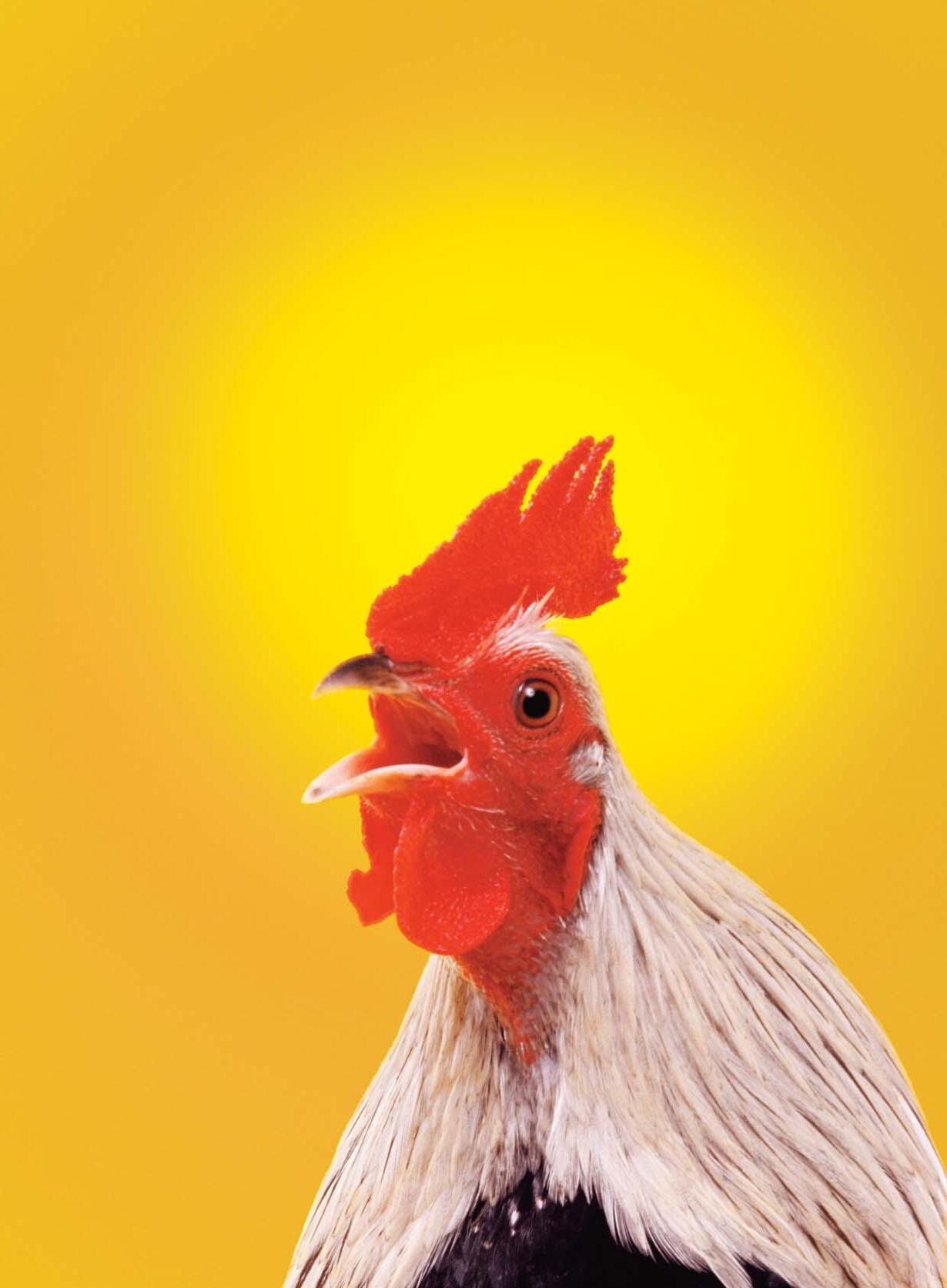
The worshippers in the synagogue were confused to hear a voice crowing like a rooster, and a few of them scolded him to quiet him down and would have thrown him out if he had not protested, “I am also a Jew.”
The confusion was pierced by the voice of the Baal Shem Tov followed by the chassidim as they hurried to finish the Ne’ilah prayer. The face of the Baal Shem Tov shone, and with a special melody the repetition of the Amidah commenced for the Ne’ilah prayer.
As the sudden sound of the call of the village dweller was heard in Heaven, its sincerity brought great pleasure Above, nullifying all the prosecutions.
The above story can help us understand the importance of the ketores (incense) burned by the Kohen Gadol in the Holy of Holies on Yom
Kippur. The ketores offering was the most prestigious service in the Beis HaMikdash. Twice a day, the ketores was burned on the golden altar, but on Yom Kippur, the Kohen Gadol also offered the ketores in the Holy of Holies. If the ketores was accepted, the Kohen Gadol exited the Holy of Holies and the Jewish people were forgiven.
According to Chassidus, the animal sacrifices in the Beis HaMikdash represent offering our Nefesh HaBahamis (animal soul) to Hashem – the sublimation of our natural instincts to the Divine Will. The ketores, on the other hand, represents our Nefesh HaElokis (G-dly soul).
Even though we no longer have the Beis HaMikdash, the animal sacrifices and the ketores play an important part in our davening. Now, the ketores is a spiritual ketores, which exists within us as teshuvah (returning to Hashem). Teshuvah is the return of oneself to one’s essence, a spark of G-dliness, which is immune to sin and corruption. It is the return to one’s true, inner self. This teshuvah arouses Hashem’s Divine Mercy and nullifies the decrees against us.
Like the young boy in the Baal Shem Tov’s shul, who tapped into his inner self, his spark of G-dliness, to become one with Hashem in the only way he knew how, may each of us merit to do true teshuvah this Yom Kippur, return to our true inner selves, and become one with Hashem in the way we know how. In the merit of our teshuvah, may we be blessed with the Geulah Shleima, when all will become one with Hashem ~
22• www.OK.org Become
CHASSIDIC INSIGHTS
Kosher by the Numbers
# of mashgichim supervising the kosher food at Yankee Stadium on April 19, 2009. 9 -14°

Temperature in Wisconsin when Rabbi Rubin made an inspection at an ~ certified cheese facility.

107°
and 100% humidity in Gonzales, Texas when Rabbi Rubin visited a spice and flavors company... quite the other extreme from Wisconsin.
Number of different flavors produced from 8000 raw ingredients at a leading flavor house under the ~


95,506
Teshuvah, Tefillah, Tzedakah
Chazzanus
• A chossid of the 5th Lubavitcher Rebbe, who was in need of parnossa, once asked for a brocha to become a chazzan. The Rebbe agreed, but with three conditions:
1. Always go to a mikveh before davening
2. Cover your head with your tallis while davening.

3. Don’t repeat any words when davening by the amud
• Once two guests came to their Rebbe and one sang chazzanus to the words of Mipnei Chataeinu. The other guest said to the Rebbe, “That chossid is singing his own Mipnei Chataeinu!” The Rebbe replied, “That’s the problem with many other chazzanim. They sing others’ Mipnei Chataeinu.”
• Reb Levi Yitzchok of Berditchev once asked a chazzan, “Why is your voice hoarse?” the chazzan replied, “I daven in shul and scream for the people.” Reb Levi Yitzchok answered, “If you daven for Hashem, your voice won’t get hoarse.”
At the end of the U’Nesana Tokef prayer on Yom Kippur, we recite: “U’teshuvah, u’tefillah, u’tzedakah ma’avirin es roi’a ha gezeirah. Through repentance, prayer, and charity we reverse the negative decree.”

In the machzor, above the word u’teshuvah, the word tzom is written. Above u’tefillah, the word kol is written. And, above the word u’tzedakah, the word mamon is written.
Now, none of these word pairings are synonymous, so why are they connected?
Tzom, kol, and mamon are actually Roshei Teivos!
• óî® (Tzom) — í¾¼ô −îò¾î íš¼® (Tza’akah v’shinui ma’aseh)

To scream out and change your ways.
• ñîš (Kol) — îòëñ þí¬î í¾îðš (Kedushah v’taher libeinu)
To become holier and purify our hearts.
• öîôô (Mamon) — ö³îò óèî îþëìô ê−®îô (Motzi m’chaveiro v’gam nosen)
Encourages people to give and gives himself.
Each word, tzom, kol, and mamon, has a gematria of 136 and when all three are added together, they equal 408 — “B’zos yavo Aharon. This is how Aharon comes to Hashem to ask forgivness for Klal Yisroel.” Zos equals 408, and Aharon came to Hashem through teshuvah, tefillah, and tzedakah, which equal 408.
SOUL NUTRITION www.OK.org • 23
הקדצו הליפתו הבושתו
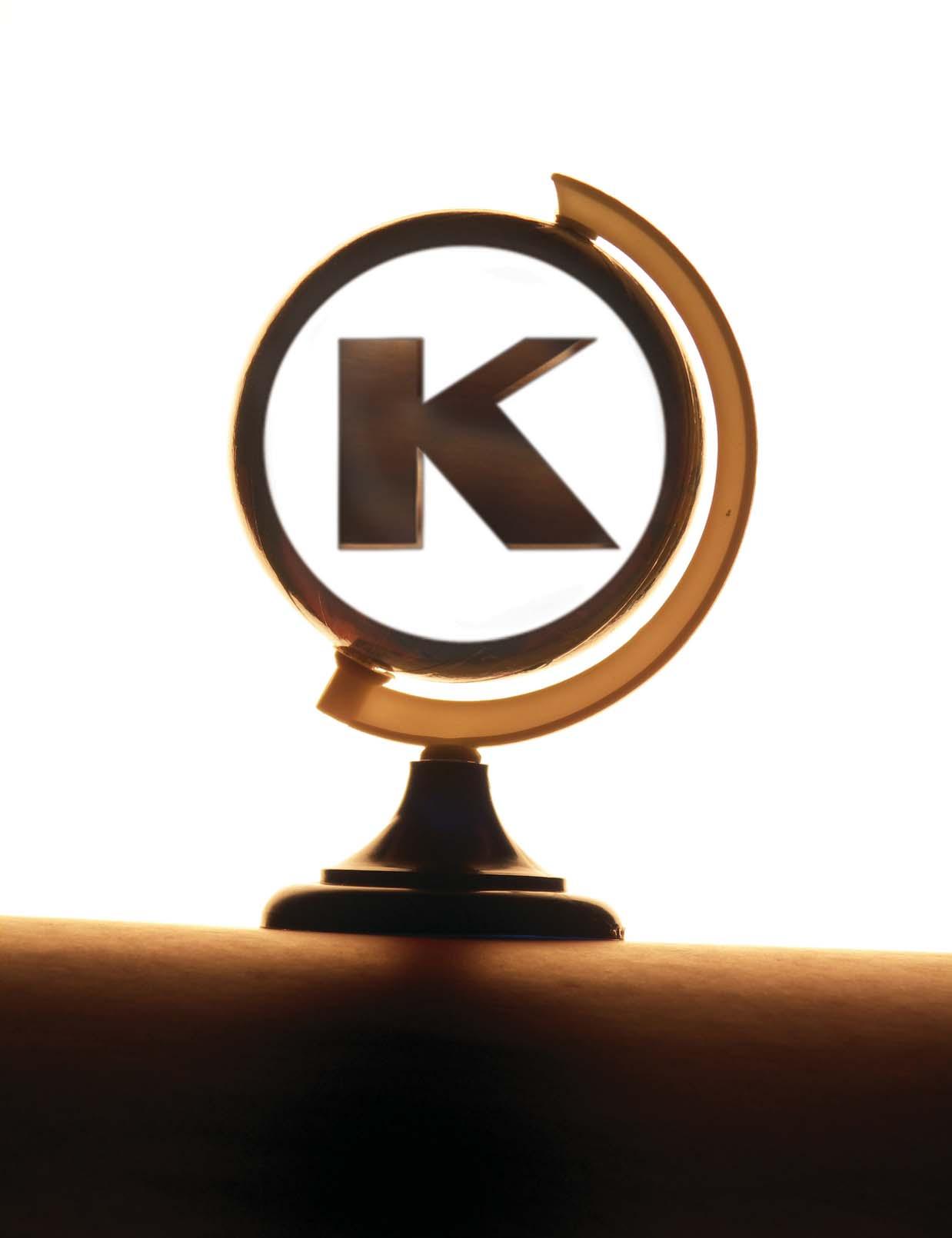

Kosher Without Compromise. KOSHER CERTIFICATION ~ Kosher Spirit, 391 Troy Ave., Brooklyn, NY 11213 718-756-7500 • info@ok.org • www.ok.org


 Editor-in-Chief
Editor-in-Chief




 By Cantor Sherwood Goffin Faculty, Belz School of Jewish Music RIETS, Yeshiva University Cantor, Lincoln Square Synagogue, New York City (1965-Present)
By Cantor Sherwood Goffin Faculty, Belz School of Jewish Music RIETS, Yeshiva University Cantor, Lincoln Square Synagogue, New York City (1965-Present)
































































